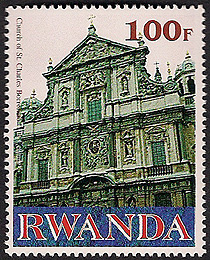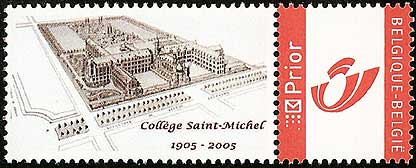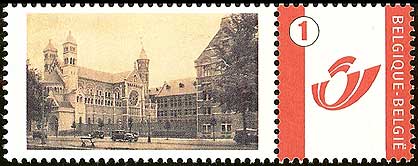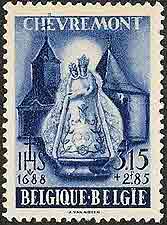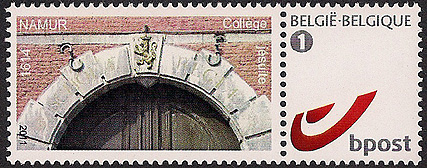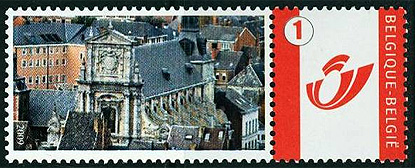The Jesuit University of Antwerp

BELGIUM, 2002, the 150th anniversary of the UFSIA, Scott 1899
In 1852 the Jesuits founded a college for higher education in commerce and trade in Antwerp, one of the first business schools in Europe. In 1965 the college was granted university status by the Belgian government and renamed Universitaire Faculteiten Sint-Ignatius Antwerpen (UFSIA), also known as the Jesuit University of Antwerp. UFSIA offered degrees in applied economics, language, literature, philosophy, law, and social and political sciences. From the early 1970s UFSIA and two public institutions, the Rijksuniversitair Centrum Antwerpen (RUCA) and the Universitaire Instelling Antwerpen (UIA) formed a confederation, which merged into the public Universiteit Antwerpen (UA) in 2002. The Universitair Centrum Sint-Ignatius Antwerpen was established to continue the Jesuit tradition of the UFSIA.
The Church of St. Charles Borromeo, Antwerp
RWANDA, Church of St. Charles Borromeo, Antwerp
from an illegal "Millennium" sheet, "Architecture of XI - XIXth Century"The Jesuit church in Antwerp is a Baroque church with a spectacular facade, built by the Jesuits between 1615 and 1621. It was first dedicated to the Virgin Mary, but was rededicated to St. Ignatius of Loyola, founder of the Jesuits, the first church to be so dedicated after Ignatius was canonized in 1622. After the Jesuits were suppressed in 1773, the church was again rededicated, this time to St. Charles Borromeo. The church was designed by the Jesuit Brother Pieter Huyssens, SJ, though the design is also partly attributed to Peter Paul Rubens. The facade is based on the Church of the Gesu in Rome, the first Jesuit church. The interior was designed to look like a Baroque banqueting hall, providing a foretaste of the heavenly banquet. The opulent decoration gave the church the nickname "the marble temple."
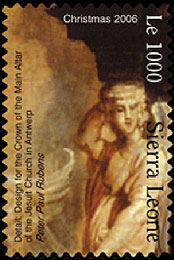
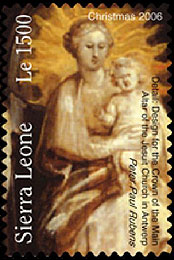

SIERRA LEONE, 2006, Christmas issue, note the differences between the single stamps and the souvenir sheet stamps, Scott 2861-2864aSierra Leone's Christmas issue for 2006 features a design by Peter Paul Rubens for the crown of the main altar of the Jesuit Church in Antwerp. Rubens accepted a series of commissions in Antwerp during the years 1609 – 21 . They included altarpieces and sketches for 39 ceiling paintings for the new Jesuit church in that city. On July 18, 1718, lightning struck and the 39 ceiling paintings were tragically lost in the subsequent fire, but the small oil sketches survive, mainly in the Vienna Academy, the Courtauld Institute Galleries, and the Ashmolean Museum, Oxford. Most of the original marble was also destroyed. However, the apse of the main altar and the Mary Chapel were spared and they provide visitors with an idea of the church's former splendor. Larger restoration works took place in the 1980s when the church was rebuilt in the way it was before the lightning. One of the church's most unique features is the interchangeable painting above the altar, which uses an original mechanism which is still in working order.
Collège Saint-Michel, Brussels

BELGIUM, 2005, for the centenary of Collège Saint-Michel
a personalized label, the creation of Roland Francart, SJ, se-tenant with Scott 2111
BELGIUM, 2007, two of the three stamps in this tourism issue were Jesuit schools, Scott 2250
